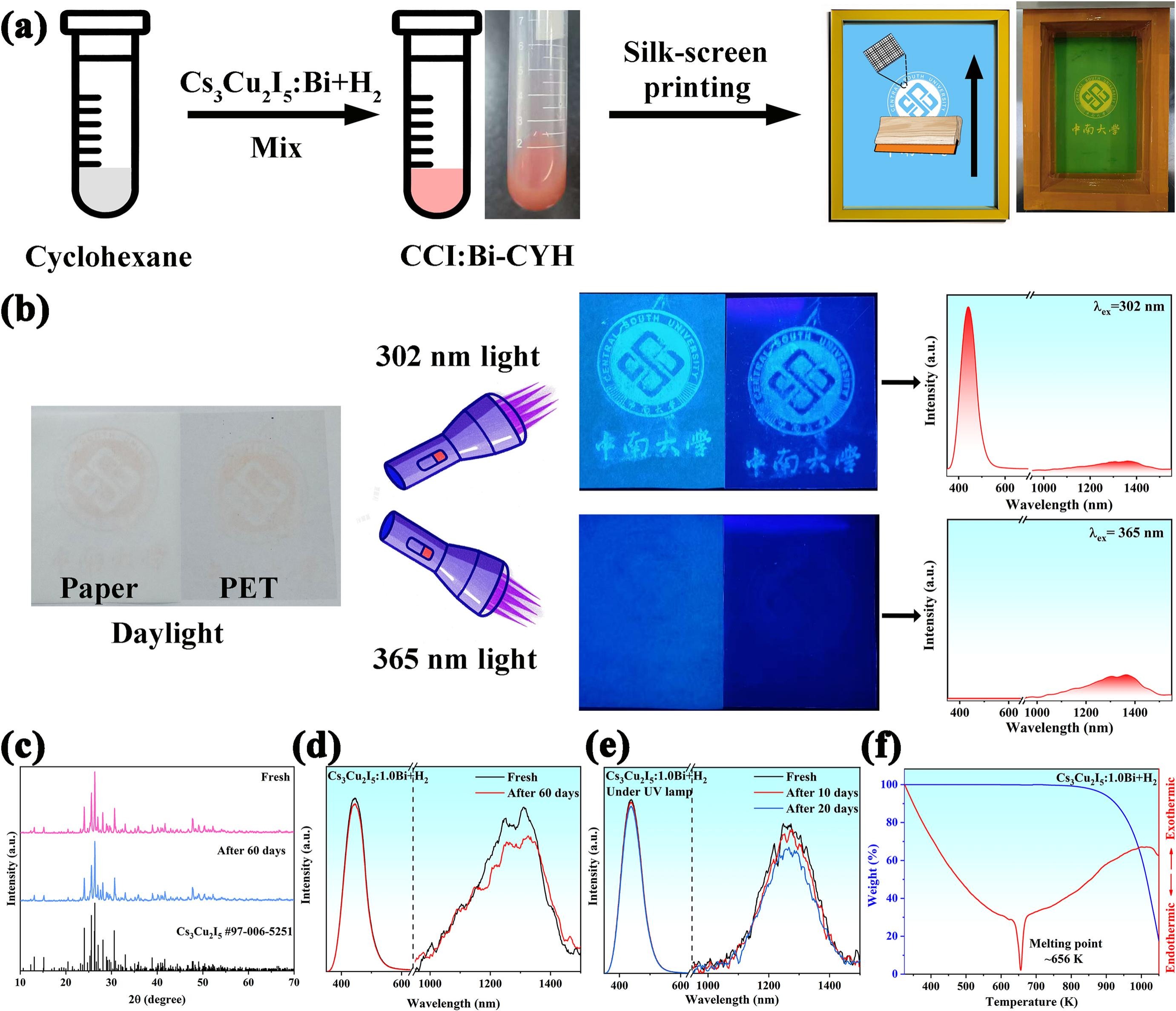Visible and near-infrared emission of lead-free Cs3Cu2I5:Bi perovskite by valence state regulation for optical anti-counterfeiting coatings
发布时间:2025-05-29
点击次数:
DOI码:10.1016/j.matchar.2025.115203
发表刊物:Materials Characterization
摘要:In recent years, the proliferation of counterfeit products has led to increased concerns about anti-counterfeiting technology, with traditional single-mode fluorescence methods proving insufficient due to their susceptibility to replication. The new copper-based halide materials have shown great potential in the field of multi-mode anti-counterfeiting due to their unique structure, excellent luminescence performance, and high defect tolerance. In this work, near-infrared emission of Cs3Cu2I5 was achieved for the first time through Bi doping. By exploiting the dual emission center characteristics of the resulting Cs3Cu2I5:Bi, we demonstrated its excitation wavelength-dependent emission. It was then mixed with cyclohexane to prepare an advanced fluorescent anti-counterfeiting coating for screen printing, enabling high-precision pattern printing onto various substrates. The resulting anti-counterfeiting patterns exhibit excellent weather resistance, remaining virtually unchanged after 60 days at room temperature. This study lays the foundation for expanding the emission range of Cs3Cu2I5 and adjusting multi band emission, and confirms its potential application in the field of multi-mode anti-counterfeiting.
合写作者:Hanqi Wei, Shujuan Zhao, Guihua Li, Xuan Liu, Zhiwei Luo, Jiayong Si
第一作者:Qihua Yang
通讯作者:Le Fu*, Gemei Cai*
卷号:25
页面范围:115203
是否译文:否
发表时间:2025-05-26
发布期刊链接:https://www.sciencedirect.com/science/article/pii/S1044580325004929?dgcid=coauthor

